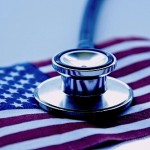Health Status Related to Income Not Insurance
 An extremely thorough analysis of changes in incomes and mortality in the United States, 2001 through 2014 presents some sobering conclusions for those who think fixing our health system will make us healthier. The research, let by Raj Chetty of Stanford University, ran data on incomes and mortality through a battery of statistical tools.
An extremely thorough analysis of changes in incomes and mortality in the United States, 2001 through 2014 presents some sobering conclusions for those who think fixing our health system will make us healthier. The research, let by Raj Chetty of Stanford University, ran data on incomes and mortality through a battery of statistical tools.
It is well understood that people in high-income households are healthier than those in low-income households. The latest research demonstrates how important incomes are to health status. Forty-year old men in households in the highest quartile of income (mean = $256,000 annually) had an average life expectancy just under 85 years in 2001. This increased by 0.20 years (a little over ten weeks) by 2014. For those in the lowest quartile ($17,000), life expectancy was about 76 years in 2001, and it only increased 0.08 years (a little over four weeks) by 2014.
Obamacare is likely to accelerate this gap, because it significantly reduces incentives for people in low-income households to increase their incomes.


